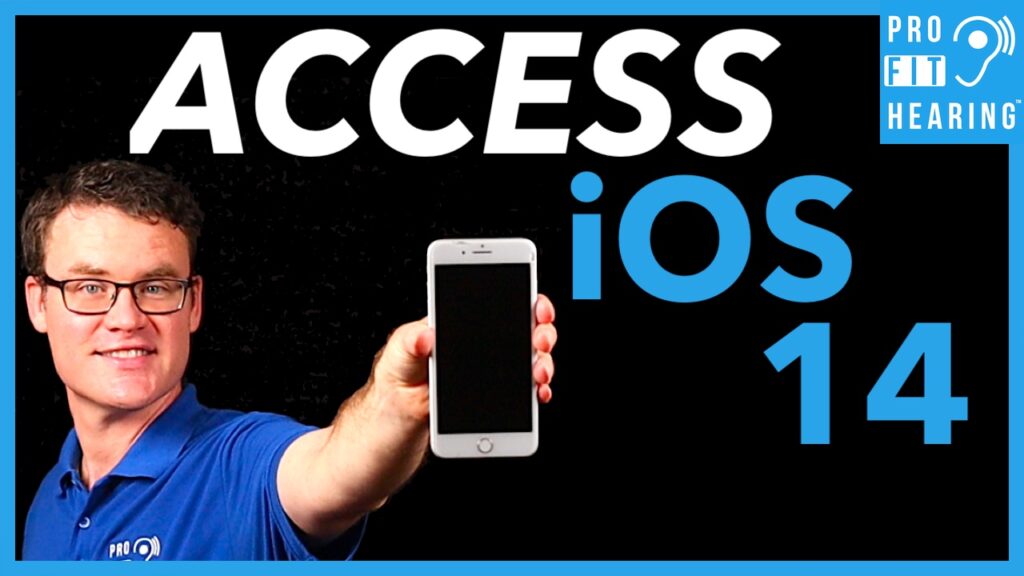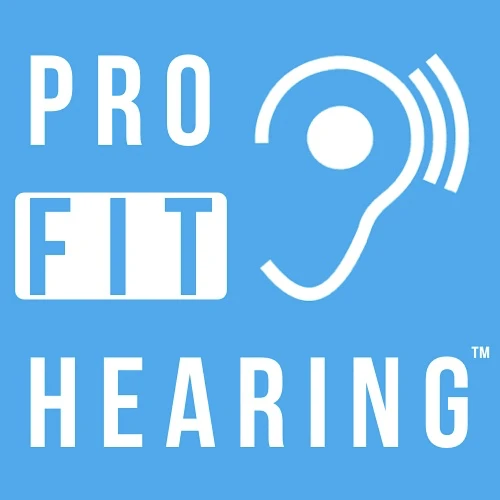iPhone Accessibility – 5 Best Features For The Hard of Hearing and Deaf Community

iPhone Accessibility
Have you tried the iPhone accessibility features for the hearing impaired? Well in this post, I’m talking about the 5 best features for the hard of hearing and deaf community. Coming up!
SUBSCRIBE to our YouTube channel for weekly videos! The video link is at the end of this post.
Hi, I’m Dr. Derek – audiologist, audio engineer, and musician with Pro Fit Hearing.com bringing you the best insight in today’s latest hearing aids, headphones, and audio technology to improve your life. If you have concerns about your hearing, always consult with your local physician or audiologist.
Today, I’m talking about the 5 Best iPhone accessibility features for the hearing impaired. Now, these options are available on the devices I’ve tested which are running iOS 13 or 14. So if you don’t see these features on your device, you may need to update your iPhone software. Make sure you read until the end of the post for my bonus tip on how to use your iPhone to protect your hearing.
Ok let’s take a look at the features.
iPhone Accessibility – 5 Best Features For Hearing
First, go to Settings, then Accessibility.
There are four main categories. Vision, Physical and Motor, Hearing, and General. You can check out all the categories to see if there is a feature that you’d like to try out, but today I’ll be focusing on Hearing.
Feature 1: Hearing Devices
Under Hearing Devices, you have the option to sync any iPhone compatible hearing aids to the iPhone. If you have iPhone compatible hearing aids, they should be listed under MFI hearing devices. MFI stands for Made for iPhone. You also have the Hearing Aid Compatibility option which can improve audio quality for hearing aids that use a telecoil for phone calls.
Made for iPhone hearing aids connect directly to the iPhone. They have access to remote control apps, GPS functionality, and battery life indicators. You can make simple sound adjustments, automatically activate saved settings depending on your location, and see what percentage of battery life you have remaining. Any sounds that you hear on the iPhone can be transmitted directly to the hearing aids. This could be your music, videos, or sound from your apps. Hearing aids that do not connect directly to the iPhone can still stream audio from the phone, but they require an audio streamer that you can wear around your neck or clip to your shirt.
Made for iPhone hearing aids also support the Live Listen feature. This turns your iPhone into a wireless microphone. Anything the iPhone mic picks up is transmitted back to the hearing aids. You can use this feature to hear someone better in a restaurant, hear a speaker or presenter, or even the television better. Just turn on Live listen and place your iphone next to whatever you want to hear. A quick way to access this feature is to enable accessibility shortcuts under Accessibility, General, Accessibility Shortcut. You can add a control for Live listen here.
Ask your audiologist about what iPhone compatible hearing aids they offer and whether they’re appropriate for your specific needs. For a detailed guide on how to pair hearing aids with an iPhone, check out this link: https://support.apple.com/en-us/HT201466
Feature 2: Sound Recognition
Ok, let’s take a look at Sound Recognition. This is new to iOS 14. If enabled, your iPhone will listen to your environment to detect certain types of sounds that you select and then notify you when the iPhone hears them. These sounds can include Alarms, Animals, Household sounds, and People. There’s a notice that reads: “Sound Recognition should not be relied upon in circumstances where you may be harmed or injured, in high-risk or emergency situations, or for navigation.”
Feature 3: RTT & TTY
RTT & TTY allows for text transmission over the phone. RTT stands for real time text. TTY stands for teletype which is not sent in real-time. With RTT, the text is sent immediately as it’s being typed and allows for a more real-time, conversational feel. RTT includes the audio as well. You can also use the Hardware TTY option if that applies to you. Check with your cell phone carrier to make sure these features are supported.
Feature 4: Audio/Visual
Something new to iOS 14 is headphone accommodations. In order to use this feature, you must have the supported Apple or Beats headphones. The AirPods Pro work with this feature.
One of the most interesting things about the Headphone Accommodations setting is the ability to adjust sound to your degree of hearing loss. You can select custom audio setup for a more fine tuned audio experience. You can even calibrate the AirPods Pro to your audiogram. Or you can just manually adjust the sound to suit your needs. There is the option to adjust the sound quality for Balanced Tone, Vocal Range, or Brightness. This changes the soft sounds and allows you to emphasize certain frequency bands for better sound quality. All the settings that you select can be applied to phone calls and/or media on your device.
Watch out for my AirPods Pro review coming soon. I’ll leave a link to that as soon as it’s available.
If you go back to audio/visual, you can see additional features like mono audio, noise cancellation for the phone, and audio balance. The balance feature can be especially useful if you have a unilateral or asymmetrical hearing loss. If you have more hearing loss in the left ear for example, you can adjust the balance toward the left so that more volume goes to the left than the right. Then you can increase the overall volume to see if the sound is more balanced between ears.
You can also use the Visual alerts option to get your attention as well.
Feature 5: Subtitles and Captioning
Subtitles and Captioning is also available if you’d like to use it. The size and style of the text can be adjusted for the videos that you like to watch. These settings are applied whenever subtitles and captioning is available.
iPhone Accessibility – Bonus Tip
Ok, now for my bonus tip. Did you know the iPhone tracks how loud your headphone volume is? It’s in the Health app on your home screen. Open the Health app, and Click on Hearing. You’ll see headphone audio levels. It will indicate your sound exposure levels measured in decibels. This measurement is more accurate when using apple or beats headphones. Your sound exposure levels can be displayed by the hour, day, week, month, or year.
The health app also can store your audiogram and noise exposure data from an Apple Watch. The Apple Watch can warn you when you are exposed to loud sounds in your environment. We always want to be cautious about being exposed to loud sounds since it can cause hearing loss.
Question of the Day
So for today’s question, did you know about these iPhone accessibility options? Let me know in the comments below.
Remember to connect with Pro fit Hearing on social media. Be a part of the Pro Fit Hearing community!
If you’re interested in hearing aids, click HERE for my free ebook “How to Buy Hearing Aids.” Know what to ask your audiologist or hearing aid dispenser so that your hearing aids are easy to use and have all the features you’re looking for.
Remember Pro Fit Hearing brings you the best insight today’s latest hearing aids, headphones, and audio technology to improve your life. If you have concerns about your hearing, always consult with your local physician or audiologist.
-Dr. Derek
